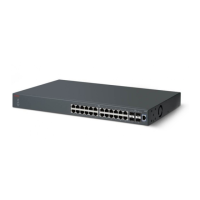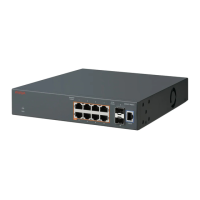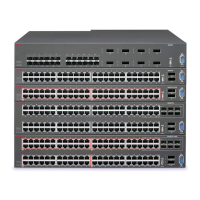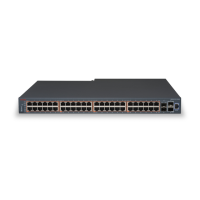show system
OR
show tech
OR
show sys-info
OR
show running-config module asset-id
Variable definitions
The following table describes the parameters for the asset-id command.
Variable Value
stack Configures the Asset ID of a stack.
unit <1–8> Configures the Asset ID of a specific unit. Enter unit
number 1–8.
WORD Specifies the Asset ID which corresponds to your
asset tracking system. Enter an alphanumeric Asset
ID of up to 32 characters.
no Removes the Asset ID of a specific unit. Enter a unit
number 1–8.
default Returns the Asset ID of a specific unit to the default
value. Enter a unit number 1–8.
Stack forced mode
Stack Forced Mode allows one or both units of a two-unit stack to become stand-alone switches if a
stack of two units fails. You can manage the units from the broken stack in Stack Forced Mode.
If you enable Stack Forced Mode on a stack, you enable Stack Forced Mode on both units in the
stack. Stack Forced Mode becomes active only if the stack fails.
You can configure Stack Forced Mode through ACLI. Refer to Enabling or disabling stack forced
mode on page 77.
Stack Forced Mode applies to a stand-alone switch that is part of a stack of two units. When
functioning in this mode, the stand-alone switch keeps the previous stack IP settings (IP address,
netmask, and gateway). An administrator can reach the device through an IP connection by Telnet
or Enterprise Device Manager while using Stack Forced Mode.
If one unit fails, the remaining unit (base or non-base unit) keeps the previous stack IP settings. The
remaining unit issues a gratuitous ARP packet when it enters Stack Forced Mode, in order for other
devices on the network to update their ARP cache.
Stack forced mode
July 2015 Getting Started with Avaya ERS 3500 Series 23
Comments on this document? infodev@avaya.com

